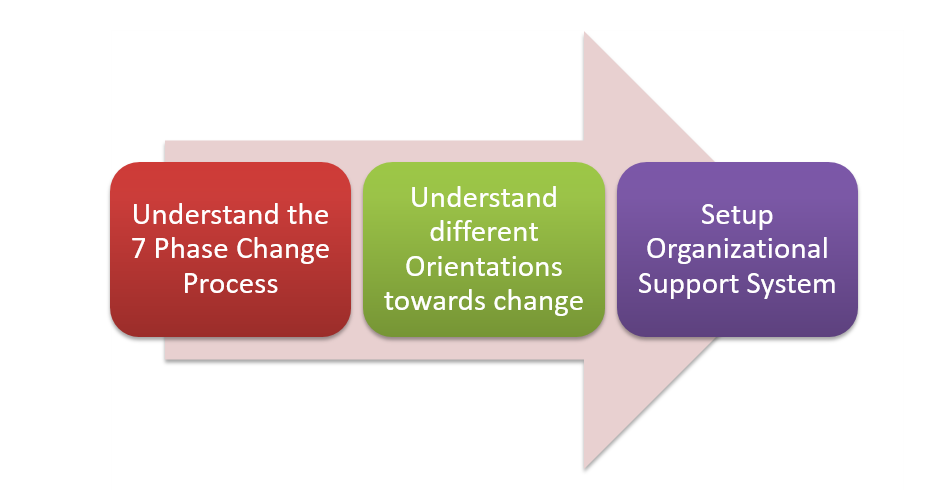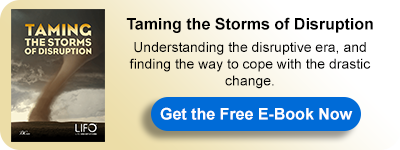From Chaos to the New Order: Managing the Change Gap
“It is not the strongest of the species that survive, nor the most intelligent, but the one most responsive to change.”
— Charles Darwin
As technology and changes are causing lots of disruption, organizations are trying hard to adapt. Hence, employees, a company’s principal asset, are the most impacted by the new technologies, causing their jobs to change, thus, forcing them to adapt and change at very high unprecedented rates. Therefore, leadership needs to show empathy and provide employees with a safe, understanding environment that allows them to incorporate the necessary changes while understanding their worries and anxiety.
Thus, LIFO has provided a process that allows employees and organizations to tread the unchartered waters of change until the turbulence of disruption settles down.

Understanding the 7 Phase Change Process and Transition Curve
The current changes require employees to adapt their behaviors and start adopting new behaviors that allow them to carry out their jobs using different skills and attitudes. Since you cannot manage what you do not know, thus LIFO lets us dig into how flexing and changing our behaviors occur, so we understand that it’s normal to feel certain emotions and how the change in our behaviors occurs.
Phase 1: Immobilisation, shock, The mismatch between high expectations and reality
It is during this phase that we face ourselves. It is like standing in front of a mirror. This can happen in several ways. We take the LIFO survey that helps us know our style, and our behaviors that accompany this style. In addition, we get some feedback from our managers and colleagues. Once we receive the input from both sources, we might feel shocked. We never thought that those were our behaviors. We don’t like what we see in the mirror. Some things need to change.
Phase 2: Denial of change, temporary retreat, false competence
At stage two, we tell ourselves that nothing needs to change. We are good enough just the way we are. We tell ourselves that things will turn out perfectly if we just continue doing what we do. We are the best.
Phase 3: Incompetence, awareness of change is necessary, frustration
We hit a wall. We cannot achieve what we need to achieve nor communicate with those around us and get the results we want without changing our ways. Change has become inevitable, and it is not easy. It hurts, and it’s frustrating and uncomfortable.
Phase 4: Acceptance of reality “Letting go” of comfortable attitudes and behaviors
It’s at this phase that we accept the reality of change. We let go of our long-held attitudes and behaviors. Those behaviors we’ve always been comfortable dealing with. The difference between phases 3 and 4 is that during phase 3, we are frustrated, and we did not take the steps necessary to change. However, during phase 4, we take action and let go.
Phase 5: Testing new behaviors, tendency to stereotype, dealing with a new reality, anger and frustration
During phase 5, we start testing the new behavior and bring it to reality. We take action and test our capacity and the outcome. Changing behavior is not an easy process, therefore, we might hit a wall as we try to carry out the behavior we have been told to work on. As we test the behavior and our capacity we might feel angry or frustrated as we are unable to carry it out correctly.
Phase 6: Search for meaning, self-analysis, seek understanding of the new identity
We have been practicing the behavior for a while now. We take a step back and analyze ourselves with our new reality taking place. We start to understand our new behavior better as it starts becoming part of our new identity.
Phase 7: Integration, incorporating meanings into new behaviors
Our new behavior is now integrated within our being. It brings us meaning. We understand that we have managed to shed our old ways, and we can now finally see our new selves. Our new behaviors are able to bring us more achievement and meaningful existence. We can now relate to our new selves as the best self we can currently be.
For more about this topic, download our latest book "Taming The Storms Of Disruption" for FREE:
